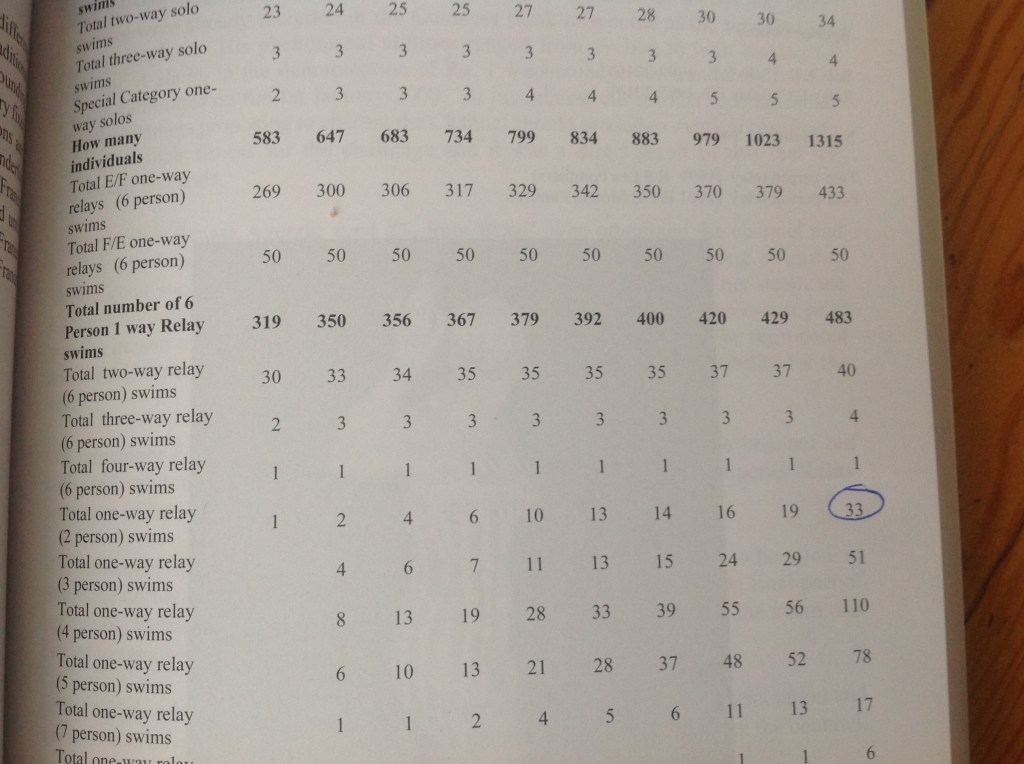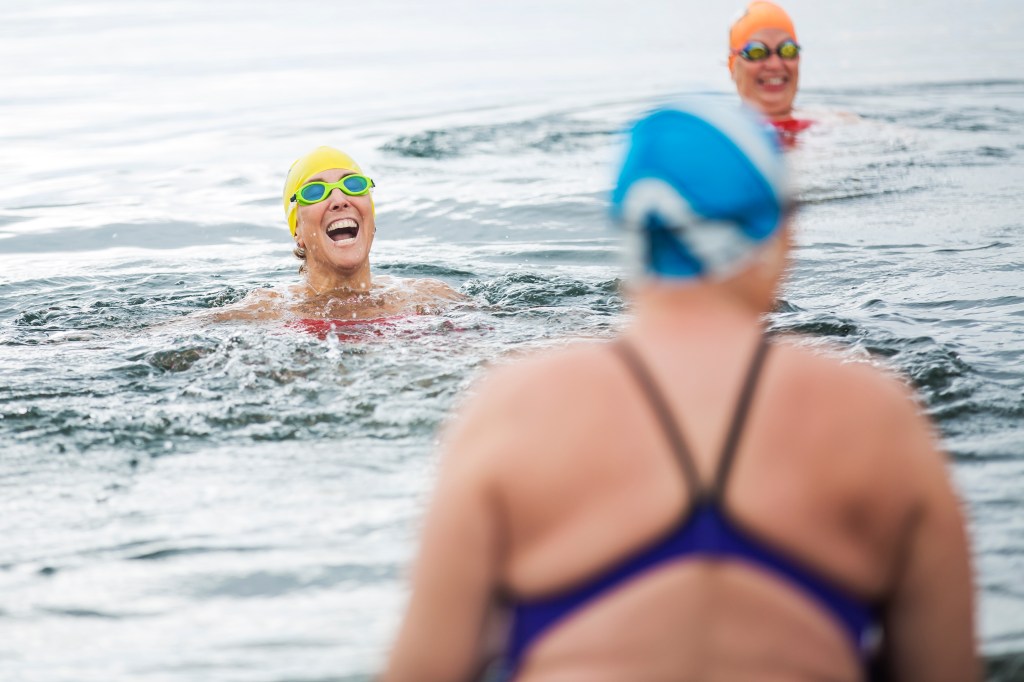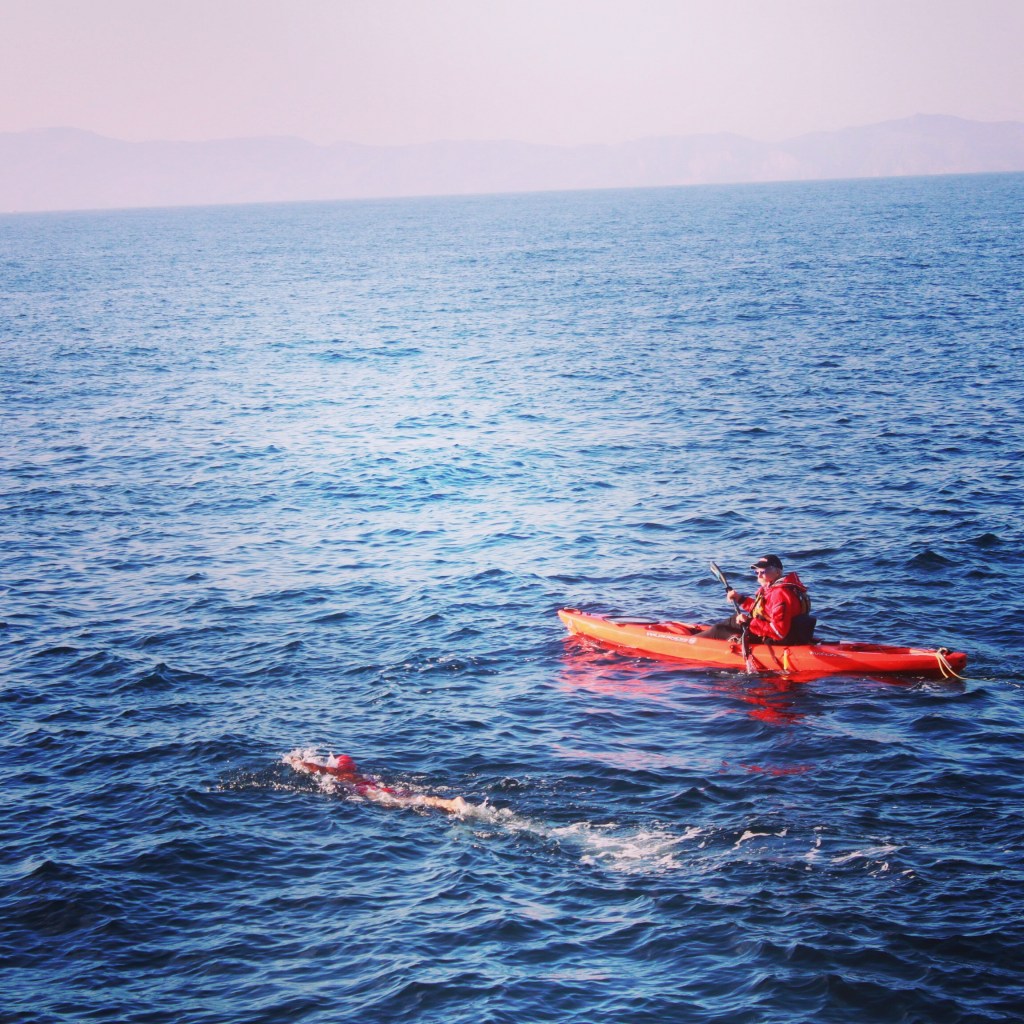“You’re a land animal trying to swim,” says Paul Sereno, University of Chicago Professor. “You’re what we call a secondary swimmer.”

Elaine
Your deposit has been received £1000.00. We have secured your position (1st swimmer 19th June – 2nd July 2023) with the non-refundable deposit.
Thanks
Reg (Reginald Brickell, Captain of the Viking Princess II)

With that innocuous looking email, Jan and I are leaping into the English Channel as a team of just two very early in the Channel swimming season. Why does a Channel swim start with securing a boat? Why so early? Why 2023?
There are only seven boats accredited by the Channel Swim Association to pilot swimmers across the storied English Channel from England to France. With the knowledge that the success of our Crazy Canucks relay of six people in 2016 in pretty rough seas was in large measure due to our excellent pilot, choosing Reg and Ray Brickell and the Viking Princess II was a given. As the Brickells’ are much sought-after respected pilots we have to book three years before our swim and coming all the way from Canada it is important to secure a first swim on the tide position. This is key as we may run into weather that will delay our swim and we will get the first shot on that tide.
Our end of June slot was the only first swim position open for all of 2023 and we booked immediately when Reg opened up his booking for that year. What does June mean? The bloody cold English Channel could be very bloody cold (14C).
“It’s a state between a dream state and an awake state,” says famous open water swimmer Lynne Cox. “Maybe we can call it sea-dreaming. The rhythm of swimming lulls your body — which, well trained, seems to keep moving on its own — and your brain is allowed to go wherever it wants.“

To swim the English Channel has been described by many as the Everest of long distance swimming. “As an open water swimmer, the English Channel is the pinnacle,” says Jan. “I want to be part of that.” I’m looking to up the ante from the six-person team I was on in 2016 as far as I think I’m capable of pushing it. (I will be 67 in 2023. Jan will be 61). Knowing my swim speed and having a pretty good handle on my abilities and mental toughness, a solo swim although tauntingly tempting seems many hundreds of strokes too far.

Of all the teams that attempt the Channel, teams of two are pretty rare. The official record shows only 33 duos have made the England to France crossing until 2019 as compared to 483 six-person teams. I guess the thinking is you might as well do a solo if you are going to do that much swimming…
Jan and I (Crazy Canucks II) will take one-hour turns dodging jelly fish while our boat captain dodges cruise ships and freighters in the world’s busiest shipping channel. It will take us anywhere from 16 to 18 hours (very estimated) so 8, 9 or even 10 swims each with a total of 50 kilometres of swimming. It took our Crazy Canucks team 13 hours and 47 minutes to complete the task in 2016.



Here is Jan with my brother Dean in a much kinder ocean as we complete the first Canadian relay crossing of the Catalina Channel in 2019.



Here I am with Ray heading toward shore in the dingy to start the English Channel crossing for our team in 2016. Some of our swim will be in the dark which is actually less scary than the all-night swim of Catalina (sharks).


“Who needs psychedelics,” says Lynne Cox. “when you can just go for a swim in the ocean.”
October 23, 2020 at 9:55 pm
Wonderful! We had a friend with paraplegia who swam it twice, once completing his solo swim.
LikeLike
October 25, 2020 at 5:15 pm
I hope think you are going to need a centrally heated wet- suit for this one Elaine. At least you have plenty of time to practice withstanding the Bloody cold English Channel. Best wishes for your attempt. JP.
Sent from my iPad
>
LikeLike
October 25, 2020 at 7:58 pm
Elaine, are you really going to do this in 2023? You never cease to amaze me. You rock girl.
Sent from my iPad
>
LikeLike
November 18, 2020 at 3:24 pm
Wow. I am breathless to think of swimming that far. I was so proud when I finally could swim 60 lengths nonstop in the Penticton pool. LOL I think it is terrific the challenge you have chosen for yourself. I wonder about a lot of the particulars but mainly I want to say I am pumped and excited for you. – David
LikeLike
November 19, 2020 at 4:31 am
1500 metres is no joke. Good job. I’m nervous…already… but channeling that into training.
LikeLike